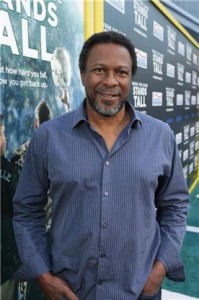 Interview with director, Thomas Carter, of When the Game Stands Tall by Eric Forthun
Interview with director, Thomas Carter, of When the Game Stands Tall by Eric Forthun
I recently sat down alongside Shari Green from TxtMovieClub to interview director Thomas Carter, whose latest film When the Game Stands Tall opens nationwide this week. The film centers on the De La Salle High School football team that won 151 straight games, the longest win streak in American sports history.
We talk to Thomas about his favorite football teams, his work on television, the storytelling choices made in adapting the novel, and his personal influences.
Shari: I have to ask, what’s your favorite football team?
Thomas: Well, I grew up in Texas, so I’m a Dallas Cowboys fan, but I have also been a huge Green Bay Packers fan for a long time. It’s this crazy dichotomy, and I think it’s because they are so formative in my football life. They had a great rivalry at one point, just playing Super Bowls years ago, and the tradition of the teams has changed but the essentials remain. With Green Bay, it’s the tradition of how they play the game and the fact that it’s a small market team, along with the ownership of the team being with the people of Green Bay. The people who want to buy a small share in the team, that idea is so unique for the NFL.
S: And your favorite college team?
T: I’ve actually gone in and out of the University of Texas, since I grew up liking them. I remember when I was really small, the team wasn’t integrated and there were no black players on the team. All of these other teams had to grow into that. I think some of the history of it [the team’s integration] is pretty bad, but my mother went to UT to get her Master’s, so it’s been part of me. I left it for a while, but I’ve kind of come back to it, so I root for them. But I live in California, so…it’s not my favorite team, but I’ve always preferred UCLA over USC. In football that’s been meaningless because they’ve had no team, but finally UCLA has a team, so we’ll see what happens.
I will say this, for the Arizona route. I have a niece that went to Arizona State and graduated, she was from California and came here. And I have a nephew that went to Northern Arizona University, so I have this connection to Arizona through them.
Eric: Moving toward the film, you have won multiple Emmys for your work on television, so how did that translate to film and inform your filmmaking?
T: Well, TV was very critical and formative in my career. I directed a couple episodes of Hill Street Blues, which was career-changing in the sense that we were doing something for the first time that was very filmic on television, that broke away from the way television was usually shot. I learned a tremendous amount on that show. A director, Robert Butler, had done the pilot and brought this new documentary-esque, handheld, long-lenses feel to television. And then I went on to do the pilot of Miami Vice, where I was able to bring a lot of things that I wanted to do, like the use of music, color, sound, and style. I had a chance to play with TV in a way that I felt movie directors did. It was a big deal to me.
S: Based on everything you’ve done, out of all of these awards, is there any other award you want to get?
T: Let’s just say I’m in the film business now, and I have a great deal of respect for the Academy. [laughs] I actually work with the Academy, I’m on the membership committee and we’re trying to do really good work beyond the awards. Just a plug for the Academy: we’re doing things for student filmmakers, writers who are coming up with original scripts, and trying to give awards and help people further their careers. It’s always good to be acknowledged and appreciated and you never know how that’s going to turn out. There are so many things that go into it. This movie as a whole project, to be noticed by the Academy…there would be nothing more exciting for any of us who worked on the film.
E: The story itself not only focuses on the 151-game winning streak, but also on the team falling apart amidst the turmoil within their structure. Why does the story center on the aftermath of the streak rather than the build-up?
T: When the script came to me in an early draft, I hadn’t really heard about it and thought, “If they always win, where’s the drama? Where’s the story going to be?” David Zelon, the producer that found this book, had the same question. He thought the book was great but didn’t know how to make a film from it. He didn’t know how to do it! So he sat down with the writer of the book, Neil Hayes, a great writer and tremendous asset to us in making this film. Neil said to him, “Did you read the hardcover or paperback?” The paperback was a new edition that added an afterword that included these years from 2003-2004 (the years in which the story takes place). When he [David] looked at that, it was clear where the story could go. When I read the script, it was dealing with that period where it takes you through part of the streak, but then into the adversity beyond the streak. What I was interested in doing was revealing to the audience how these teams are built, not that they win games, but answering the questions, “Why do they win the games? Who are they? How are these young men taught?” For me, the script was so heavy, and still is; I don’t think we solved every problem, because we were so ambitious trying to tell so many stories.
I still was struggling as a director and storyteller to figure out what the real hook was, exactly. Starting with one group of guys on the team, and moving to another group, there was this disjointed nature to the story that’s different from movies usually. I talked to Bob and Terry [the head and assistant coach, respectively] about how the team was immature and hadn’t bought into the philosophy as tightly. They were looser, weren’t behaving, some of them were feeling entitled. They hadn’t developed real leaders. And every team is different! They did this over 12 years. It’s not like having a pro football or basketball team where you have these core players that will always be there. Guys graduate every year, so each year they face a new challenge. It’s a miracle they could win that long because they weren’t winning with one team, but basically 12 different teams. Every year is a new challenge, and this was a particular challenge since they were at the peak of the streak. They felt like they could win but they knew what the challenges were. I knew then as a filmmaker that was a hook I could buy into, and how they build and repair the team. That was on top of the other obstacles in the film which are true: the personal tragedy for one of the team members, a big health scare for the coach, and you put all of that together and it’s a lot to deal with in a year. That gave me the bigger picture that this is what we are driving toward, and this is the story.
S: Did the religious aspects of the characters and the school speak to you heavily?
T: It didn’t speak to me heavily because I’m not a religious person. Jim [Caviezel] is famously a religious person, and the movie is partly financed by a religious marketing/distribution company (Affirm Films, which partnered with Sony). They make films that appeal to a faith-based audience, but I didn’t want this to be a faith-based film. It obviously has elements of faith in it, and that’s comfortable to the level that it’s true to the characters. It’s not about us trying to impose any ideas on anyone. It’s a Catholic high school, Bob Ladouceur [Jim Caviezel] does teach a religion class, but at the same time they are not coaching from a religious perspective. They’re coaching from a human values perspective, so there are faith-based people that support those values and non-faith-based people that support those values. They are values that make us better people and tie us together in a more loving way. Those are things that everyone, including myself, is enthusiastic about, because they are philosophically very powerful. Yet even within the scenes that have faith, I didn’t want them to be monolithic or monochromatic scenes; that is, I didn’t just want it to be, “Here’s a belief system, and that’s all there is.” There are challenges within the movie, like the first scene in the religion class where Bob says a verse from the Bible. I felt it was realistic that some characters, like Cam Colvin, buy into it, while Tayshon, the other character in that scene, is questioning it. He says he’s not sure how it fits into his life and what he’s seen, or what’s happened to his aunt. It’s those questions that people should continue to ask.
We had a scene near the end of the film where the kids are saying a prayer, the Lord’s Prayer, before they go into the game, and they used to say this Catholic prayer that would invoke the name of the saint, but then I was asked to take that part out because it might offend the larger evangelical community. There was this attempt to appeal to the larger audience that I felt was somewhat illegitimate to do because they are a Catholic high school, this is what they say, and surely people of different denominations should be able to embrace a story with a commonality of belief. Even I grew up myself with the church despite not being religious now. We have to be tolerant, open, and continue to ask honest questions. Faith shouldn’t mean that you become dumb and blind; in fact, faith probably means that you continue to believe even when you’re willing to open your eyes and ears and mind and continue to question. Obviously I thought a lot about that as a filmmaker, especially with the coaches teaching the kids about brotherhood, love, and dependability, something we can all support. There’s a universality in everybody’s response to the film. I’ve said a lot about that.
E: One of the characters in the film gets offered to play at the collegiate level at Oregon on a full-ride scholarship, so  he’s setting him and his family up for a bright future. What do you think about football as a means of upward social mobility for a lot of families coming from high school?
he’s setting him and his family up for a bright future. What do you think about football as a means of upward social mobility for a lot of families coming from high school?
T: I think any legitimate opportunity that can make your life better should be embraced. I’m thrilled that football or basketball is one of those avenues, but it’s almost this cliché…I used to be on this show called White Shadow, about a white basketball team in this lower-income area. We kept using this phrase, “ticket out of the ghetto,” and I got so sick of it partly because the opportunity for sports to carry somebody beyond a low-income means is so small on a national level. It will touch so few people that it’s almost not of consequence. Maybe a little bit more consequence to get some kids to go to college, but what we find is that most athletes that go to college aren’t graduating. Now we’re admitting to ourselves that college football is really a business. There’s so much money generated, and the athletes aren’t even benefiting.
S: I actually had that down as a question. What are your thoughts on college players not getting paid?
T: I think we have to find some way of compensating players when so much money is being made. I’ve been surprised to see how little they are allowed to accept, the rules are restrictive on them. You think from the outside, “Oh, they have a scholarship so it must be great for them.” There are some roads that are greased in the wrong way: they are put in the wrong classes that won’t help them when they graduate, most of them won’t graduate, and they are struggling to pay small bills. They don’t really have spending money. We have to find a way for them to share in that wealth, like a trust fund which has been suggested that is put away for them to accrue. There should be an increase in the money that they are allotted. Just on this press tour, I’m getting $300 per day in expenses and these guys are getting nothing. They are practicing so much that they can’t study or work. I don’t want to take lightly that they get a scholarship and opportunity, it’s tremendous, but they are not guided toward something that will truly help them after football. The truth is, like most guys in high school that don’t go onto college football, most college football players aren’t going to the pros. Even those guys, what is the average time they play in the NFL, 3 years or something like that? You’re out in 3 years, you’ve got a broken leg or a busted head, and you have no college education and probably no money at that point. I absolutely think reform is needed and I’m glad we’re working toward that.
E: On a lighter note, what are your favorite sports films?
T: I should think more about that. I’m a big fan of Remember the Titans, I really like that movie and I cry 3 times when I watch it and love the message. I really like Moneyball. I don’t know if they’d call themselves a sports film but it touches on baseball and the notion of making a team and how revolutionary it was at the time. I like other sports movies for different reasons, I just think for my personal enjoyment those movies get me more. I like the other obvious choices, but there’s something a little more special about those.
S: Is there someone in your past, like a coach or teacher, that was a mentor that carried you through these films?
T: I don’t want this answer to be a cheat, so maybe I’ll give you two answers. My mother was a teacher, and I come from a family of educators, like my mother’s two sisters and my grandmother. I got a teacher’s certificate in the state of Texas that I never use, since I went to California to make films. That’s always been a part of my personal culture with my mother being a big influence. I dedicated Coach Carterto my mom, actually. But I also had two other teachers. One was Mrs. Gordon, who was my third grade teacher and my mom’s best friend. She was an exacting teacher but really good. Another one was when I was a little kid in Texas, I went to an integrated high school and Connie Adams, my high school drama teacher, was really inclusive and courageous in how she cast the plays. They were revolutionary for a little high school in Smithville, Texas. I’ll never forget that, her courage in doing that and believing me as a theater person. I’ve been sustained by that.
Thank you guys!
E/S: Thank you!
When the Game Stands Tall opens nationwide on Friday, August 22nd.
 The Last of Robin Hood
The Last of Robin Hood
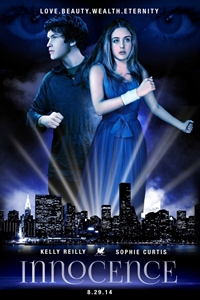 Innocence
Innocence
 The November Man
The November Man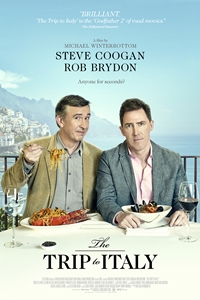 The Trip to Italy
The Trip to Italy
 As Above, So Below
As Above, So Below
 Sin City: A Dame to Kill For
Sin City: A Dame to Kill For
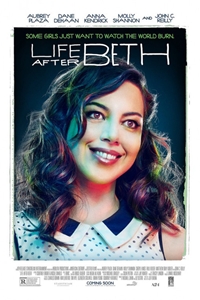 Life After Beth
Life After Beth
 If I Stay
If I Stay
 When the Game Stands Tall
When the Game Stands Tall
 Interview with director, Thomas Carter, of When the Game Stands Tall by Eric Forthun
Interview with director, Thomas Carter, of When the Game Stands Tall by Eric Forthun
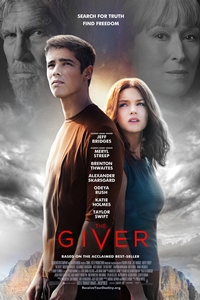 The Giver
The Giver
 The Expendables 3
The Expendables 3
 Calvary
Calvary
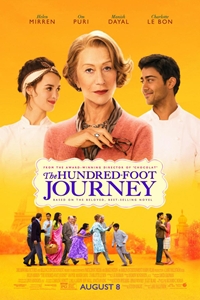 The Hundred-Foot Journey
The Hundred-Foot Journey








